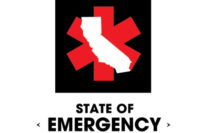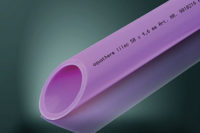Jaclyn Yeehit a home run in her first at-bat. Yee, an associate civil engineer in Dublin, Calif., a community 45 minutes southeast of San Francisco, got the rare opportunity to lead a major project as the local water district expanded its recycled water system to retrofit potable water irrigation at parks and schools.
“Normally our agency would seek engineering consultants to work on a project of this magnitude,” Dublin San Ramon Services District Engineering Services Manager and District Engineer Rhodora Biagtan says. “For the first time, we decided to design and conduct construction management in-house.
“This was Jaclyn’s first major project where she took responsibility of project engineering and construction management. She has a great grasp of the technical requirements to ensure that the pipeline installation and recycled water deliveries happen with little disruption to the service we provide.”
Yee, who received a bachelor’s of science from California Polytechnic State University, had seven years of experience in the public works sector before joining the DSRSD engineering department in 2007.
The roots of the Central Dublin Recycled Water Project were planted in 1995 when the Dublin San Ramon Services District and the East Bay Municipal Utility District created the San Ramon Valley Recycled Water Program to provide recycled water to schools, parks, golf courses, commercial areas and other large landscapes.
It wasn’t until early 2006 when the program’s first phrase finished construction, which included the water recycling plant and a backbone transmission system that delivers recycled water to each agency’s service area. DSRSD requires new developments to be plumbed for recycled water irrigation from the start. Established neighborhoods are being retrofitted as funding becomes available.
Yee started designing the recycled water system expansion for Dublin’s established central area in 2011. However, that was not the most challenging aspect for her. Beyond the layout and specification came more responsibilities. Yee had to coordinate with schedules such as with local city officials, the school district and more.
“I learned to over-communicate on what needs to be done and emphasize constraints with all interested parties early on in the project,” she says. “Our big constraint was the timing of work along roads that lead up to and away from schools. Since we were bringing recycled water to schools we had to do construction when school was out of session.”
Construction and funding
Yee and her team broke ground in June 2012 and Oakland, Calif.-based contractors McGuire and Hester completed construction in early 2013. The budget was more than $3.9 million with more than 25% of the cost shared by the California Department of Water Resources through a $1.13 million Integrated Regional Water Management grant.
Also, a $253,000 federal grant from the U.S. Department of Interior’s Bureau of Reclamation reimbursed the DSRSD for its project feasibility study and environmental documents. The remaining costs were covered by the district’s Water Replacement Fund, which is subsidized by ratepayers and developers.
After construction wrapped up, more than 8,000 linear ft. of purple pipe was laid. DSRSD installed Vinyltech’s HDPE pipe, Cresline West PVC pipe for the reclaimed water and Underground Solutions’ fusible PVC pipe.
Utilizing fusible PVC piping for a project was a change for Yee, but it literally paid off in the end.
“For us, it was a little bit different using a fusible PVC pipe. It’s a thinner plastic pipe and more flexible than a regular HDPE pipe, which was our other option,” she says. “We saved some money on materials with the fusible PVC pipe.”
A major portion of the recycled water project was replacing old irrigation heads and controls. This was the first time certain parks and schools had upgraded their irrigation systems since being installed throughout 1970-2002. Yee and her team installed irrigation controllers and RainBird irrigation heads from Horizon Distributors.
“Doing the retrofits of the existing irrigation systems was a challenge, especially at the schools where the systems are a lot older,” Yee states. “We had to keep in mind our pressures because our recycled water lines have a higher pressure than our potable-water lines. We had to retrofit all the irrigation heads to meet recycled water standards.”
Yee notes if the old piping had remained, the entire system would have been susceptible to major problems. Pipes could have burst so the crew installed Wilkins water-pressure valves with integral bypass check valves.
“We had to make sure in our design that the meters would have a pressure-releasing valve,” Yee says. “When there are older lines and you put in higher pressure there is more likelihood of breaking.”
During the project, Yee encountered some unexpected hurdles.
“We had some limitations to where we could place our water mains,” she states. “I looked at our record drawings, but when we went out and excavated the roadway we found out that some existing utilities weren’t always where we expected them to be.”
One of those surprises required a major adjustment to central element of the system.
She adds: “We found there was an older water line on the south side for one of the streets. That’s where we planned to put our recycled water line, but, we had to move the water main to the north side to make sure we had enough room. It was a safety measure we were concerned about. We didn’t want a contractor excavating too close to a pressurized pipeline.”
DSRSD utilized horizontal directional drilling at certain areas of the project – a technique new to Yee. It also is the first time the method was done while using fusible PVC piping.
In two 830-ft. sections for a total of 1,660 ft. of 12-in. water main piping, the project required horizontal directional drilling to minimize trenching at an intersection of a high school, a city pool and a creek. The pipe was installed 10 to 30 ft. below the surface and drilled to the north.
“We needed to do the drilling to protect the existing creek we needed to cross,” Yee says. “The added benefit of drilling underneath the creek was that the drilling also went underneath the high school. This protected the school from large amounts of open-cut trenching that would have damaged more of the high school fields.”
Reaching more sites
Today, the recycled water is produced at the Jeffrey G. Hansen Water Recycling Facility adjacent to the DSRSD Regional Wastewater Treatment Facility. Wastewater is treated three times at the plant to meet the standards set by the California Department of Public Health for unrestricted use of recycled water.
When the systems first became operational in 2006, recycled water reached nearly 150 sites. Since then, more sites have been reached each year, topping out at nearly 350 in 2012. Now, the system can produce up to 9.7 million gallons per day and with every gallon of recycled water used, a gallon of drinkable water is saved. This improves the reliability of the water supply for everyone in the valley.
In the DSRSD service area, 85% of the potable water is imported through the Sacramento-San Joaquin Delta. In 2013, Biagtan reports that the reliability of this supply was at an all-time low due to drought and water-delivery restrictions imposed to protect endangered species in the delta.
“For the four schools and three parks, switching from potable to recycled water irrigation saves 125 acre ft. per year (or the equivalent of 40.7 million gal. of water per year),” Yee says.
Biagtan adds: “That number is a little low right now because customers have been using less water through voluntary reductions. That number is lower than projections we had, but it’s still significant. That’s a chip off the iceberg and we can still do so much more to increase recycled water delivery and save drinking water for drinking.”
On the horizon
Biagtan reports that the community is also taking steps to embrace recycled water. Customers are taking advantage of available rebates and installing more HET toilets in their homes. The DSRSD currently saves 135 gallons per person per day. Its target is 163 gallons per person per day.
This upgraded recycled water system has room to grow, according to Yee and Biagtan.
“We did size some of the lines for expansion to the west,” Yee says. “That area is already developed and retrofitting that area will depend on if we get future funding.”
Biagtan adds: “We’re working on getting more funding so we can expand recycled water to other areas. New development areas in the community are putting in their own systems, but installing recycled water systems in established areas is more expensive because we have to cut pavement and build around existing underground utilities.
“This community needs assistance from the state and federal government to expand recycled water out further, save drinking water for drinking and decreasing our reliance on imported water.”






